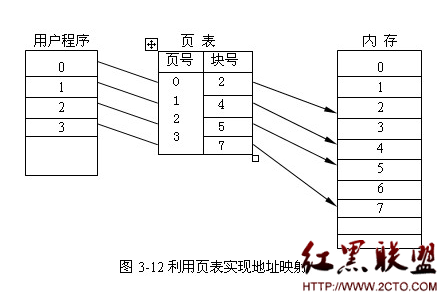Netty源码中对Redis协议的实现
近期一直在做网络协议相关的工作,所以博客也就与之相关的比较多,今天楼主结合 Redis的协议 RESP 看看在 Netty 源码中是如何实现的。
RESP 协议
RESP 是 Redis 序列化协议的简写。它是一种直观的文本协议,优势在于实现非常简单,解析性能极好。
Redis 协议将传输的结构数据分为 5 种最小单元类型,单元结束时统一加上回车换行符号\r\n,来表示该单元的结束。
单行字符串 以 + 符号开头。 多行字符串 以 $ 符号开头,后跟字符串长度。 整数值 以 : 符号开头,后跟整数的字符串形式。 错误消息 以 - 符号开头。 数组 以 * 号开头,后跟数组的长度。关于 RESP 协议的具体介绍感兴趣的小伙伴请移步楼主的另一篇文章Redis协议规范(译文)
Netty 中 RESP 协议的定义
如下面代码中所表示的,Netty中使用对应符号的ASCII码来表示,感兴趣的小伙伴可以查一下ASCII码表来验证一下。
public enum RedisMessageType {
// 以 + 开头的单行字符串
SIMPLE_STRING((byte)43, true),
// 以 - 开头的错误信息
ERROR((byte)45, true),
// 以 : 开头的整型数据
INTEGER((byte)58, true),
// 以 $ 开头的多行字符串
BULK_STRING((byte)36, false),
// 以 * 开头的数组
ARRAY_HEADER((byte)42, false),
ARRAY((byte)42, false);
private final byte value;
private final boolean inline;
private RedisMessageType(byte value, boolean inline) {
this.value = value;
this.inline = inline;
}
public byte value() {
return this.value;
}
public boolean isInline() {
return this.inline;
}
public static RedisMessageType valueOf(byte value) {
switch(value) {
case 36:
return BULK_STRING;
case 42:
return ARRAY_HEADER;
case 43:
return SIMPLE_STRING;
case 45:
return ERROR;
case 58:
return INTEGER;
default:
throw new RedisCodecException("Unknown RedisMessageType: " + value);
}
}
}
Netty 中 RESP 解码器实现
解码器,顾名思义,就是将服务器返回的数据根据协议反序列化成易于阅读的信息。RedisDecoder 就是根据 RESP 将服务端返回的信息反序列化出来。下面是指令的编码格式
SET key value => *3\r\n$5\r\nSET\r\n$1\r\nkey\r\n$1\r\nvalue\r\n
指令是一个字符串数组,编码一个字符串数组,首先需要编码数组长度*3\r\n。然后依次编码各个字符串参数。编码字符串首先需要编码字符串的长度$5\r\n。然后再编码字符串的内容SET\r\n。Redis 消息以\r\n作为分隔符,这样设计其实挺浪费网络传输流量的,消息内容里面到处都是\r\n符号。但是这样的消息可读性会比较好,便于调试。RESP 协议是牺牲性能换取可读,易于实现的一个经典例子。
指令解码器的实现,网络字节流的读取存在拆包问题。所拆包问题是指一次Read调用从套件字读到的字节数组可能只是一个完整消息的一部分。而另外一部分则需要发起另外一次Read调用才可能读到,甚至要发起多个Read调用才可以读到完整的一条消息。对于拆包问题感兴趣的小伙伴可以查看楼主的另一篇文章TCP 粘包问题浅析及其解决方案
如果我们拿部分消息去反序列化成输入消息对象肯定是要失败的,或者说生成的消息对象是不完整填充的。这个时候我们需要等待下一次Read调用,然后将这两次Read调用的字节数组拼起来,尝试再一次反序列化。
问题来了,如果一个输入消息对象很大,就可能需要多个Read调用和多次反序列化操作才能完整的解包出一个输入对象。那这个反序列化的过程就会重复了多次。
针对这个问题,Netty 中很巧妙的解决了这个问题,如下所示,Netty 中通过 state 属性来保存当前序列化的状态,然后下次反序列化的时候就可以从上次记录的 state 直接继续反序列化。这样就避免了重复的问题。
// 保持当前序列化状态的字段
private RedisDecoder.State state;
public RedisDecoder() {
this(65536, FixedRedisMessagePool.INSTANCE);
}
public RedisDecoder(int maxInlineMessageLength, RedisMessagePool messagePool) {
this.toPositiveLongProcessor = new RedisDecoder.ToPositiveLongProcessor();
// 默认初始化状态为,反序列化指令类型
this.state = RedisDecoder.State.DECODE_TYPE;
if (maxInlineMessageLength > 0 && maxInlineMessageLength <= 536870912) {
this.maxInlineMessageLength = maxInlineMessageLength;
this.messagePool = messagePool;
} else {
throw new RedisCodecException("maxInlineMessageLength: " + maxInlineMessageLength + " (expected: <= " + 536870912 + ")");
}
}
// 解码器的主要业务逻辑
protected void decode(ChannelHandlerContext ctx, ByteBuf in, List
下面代码中,是针对每种数据类型进行反序列化的具体业务逻辑。有小伙伴可能会想,没有看到解码胡数组类型的逻辑呢?实际上在 RESP 协议中数组就是其他类型的组合,所以完全可以循环读取,按照单个元素解码。
// 解码消息类型
private boolean decodeType(ByteBuf in) throws Exception {
if (!in.isReadable()) {
return false;
} else {
this.type = RedisMessageType.valueOf(in.readByte());
this.state = this.type.isInline() RedisDecoder.State.DECODE_INLINE : RedisDecoder.State.DECODE_LENGTH;
return true;
}
}
// 解码单行字符串,错误信息,或者整型数据类型
private boolean decodeInline(ByteBuf in, List
Netty 中 RESP 编码器实现
编码器,顾名思义,就是将对象根据 RESP 协议序列化成字节流发送到服务端。编码器的实现非常简单,不用考虑拆包等问题,就是分配一个ByteBuf,然后将将消息输出对象序列化的字节数组塞到ByteBuf中输出就可以了。
下面代码中就是 encode 方法直接调用 writeRedisMessage 方法,根据消息类型进行写buffer操作。
@Override protected void encode(ChannelHandlerContext ctx, RedisMessage msg, Listout) throws Exception { try { writeRedisMessage(ctx.alloc(), msg, out); } catch (CodecException e) { throw e; } catch (Exception e) { throw new CodecException(e); } } private void writeRedisMessage(ByteBufAllocator allocator, RedisMessage msg, List out) { // 判断消息类型,然后调用写相应消息的方法。 if (msg instanceof InlineCommandRedisMessage) { writeInlineCommandMessage(allocator, (InlineCommandRedisMessage) msg, out); } else if (msg instanceof SimpleStringRedisMessage) { writeSimpleStringMessage(allocator, (SimpleStringRedisMessage) msg, out); } else if (msg instanceof ErrorRedisMessage) { writeErrorMessage(allocator, (ErrorRedisMessage) msg, out); } else if (msg instanceof IntegerRedisMessage) { writeIntegerMessage(allocator, (IntegerRedisMessage) msg, out); } else if (msg instanceof FullBulkStringRedisMessage) { writeFullBulkStringMessage(allocator, (FullBulkStringRedisMessage) msg, out); } else if (msg instanceof BulkStringRedisContent) { writeBulkStringContent(allocator, (BulkStringRedisContent) msg, out); } else if (msg instanceof BulkStringHeaderRedisMessage) { writeBulkStringHeader(allocator, (BulkStringHeaderRedisMessage) msg, out); } else if (msg instanceof ArrayHeaderRedisMessage) { writeArrayHeader(allocator, (ArrayHeaderRedisMessage) msg, out); } else if (msg instanceof ArrayRedisMessage) { writeArrayMessage(allocator, (ArrayRedisMessage) msg, out); } else { throw new CodecException("unknown message type: " + msg); } }
下面代码主要是实现对应消息按照 RESP 协议 进行序列化操作,具体就是上面楼主说的,分配一个ByteBuf,然后将将消息输出对象序列化的字节数组塞到ByteBuf中输出即可。
private static void writeInlineCommandMessage(ByteBufAllocator allocator, InlineCommandRedisMessage msg,
List out) {
writeString(allocator, RedisMessageType.INLINE_COMMAND, msg.content(), out);
}
private static void writeSimpleStringMessage(ByteBufAllocator allocator, SimpleStringRedisMessage msg,
List out) {
writeString(allocator, RedisMessageType.SIMPLE_STRING, msg.content(), out);
}
private static void writeErrorMessage(ByteBufAllocator allocator, ErrorRedisMessage msg, List out) {
writeString(allocator, RedisMessageType.ERROR, msg.content(), out);
}
private static void writeString(ByteBufAllocator allocator, RedisMessageType type, String content,
List out) {
ByteBuf buf = allocator.ioBuffer(type.length() + ByteBufUtil.utf8MaxBytes(content) +
RedisConstants.EOL_LENGTH);
type.writeTo(buf);
ByteBufUtil.writeUtf8(buf, content);
buf.writeShort(RedisConstants.EOL_SHORT);
out.add(buf);
}
private void writeIntegerMessage(ByteBufAllocator allocator, IntegerRedisMessage msg, List out) {
ByteBuf buf = allocator.ioBuffer(RedisConstants.TYPE_LENGTH + RedisConstants.LONG_MAX_LENGTH +
RedisConstants.EOL_LENGTH);
RedisMessageType.INTEGER.writeTo(buf);
buf.writeBytes(numberToBytes(msg.value()));
buf.writeShort(RedisConstants.EOL_SHORT);
out.add(buf);
}
private void writeBulkStringHeader(ByteBufAllocator allocator, BulkStringHeaderRedisMessage msg, List out) {
final ByteBuf buf = allocator.ioBuffer(RedisConstants.TYPE_LENGTH +
(msg.isNull() RedisConstants.NULL_LENGTH :
RedisConstants.LONG_MAX_LENGTH + RedisConstants.EOL_LENGTH));
RedisMessageType.BULK_STRING.writeTo(buf);
if (msg.isNull()) {
buf.writeShort(RedisConstants.NULL_SHORT);
} else {
buf.writeBytes(numberToBytes(msg.bulkStringLength()));
buf.writeShort(RedisConstants.EOL_SHORT);
}
out.add(buf);
}
private static void writeBulkStringContent(ByteBufAllocator allocator, BulkStringRedisContent msg,
List out) {
out.add(msg.content().retain());
if (msg instanceof LastBulkStringRedisContent) {
out.add(allocator.ioBuffer(RedisConstants.EOL_LENGTH).writeShort(RedisConstants.EOL_SHORT));
}
}
private void writeFullBulkStringMessage(ByteBufAllocator allocator, FullBulkStringRedisMessage msg,
List out) {
if (msg.isNull()) {
ByteBuf buf = allocator.ioBuffer(RedisConstants.TYPE_LENGTH + RedisConstants.NULL_LENGTH +
RedisConstants.EOL_LENGTH);
RedisMessageType.BULK_STRING.writeTo(buf);
buf.writeShort(RedisConstants.NULL_SHORT);
buf.writeShort(RedisConstants.EOL_SHORT);
out.add(buf);
} else {
ByteBuf headerBuf = allocator.ioBuffer(RedisConstants.TYPE_LENGTH + RedisConstants.LONG_MAX_LENGTH +
RedisConstants.EOL_LENGTH);
RedisMessageType.BULK_STRING.writeTo(headerBuf);
headerBuf.writeBytes(numberToBytes(msg.content().readableBytes()));
headerBuf.writeShort(RedisConstants.EOL_SHORT);
out.add(headerBuf);
out.add(msg.content().retain());
out.add(allocator.ioBuffer(RedisConstants.EOL_LENGTH).writeShort(RedisConstants.EOL_SHORT));
}
}
/**
* Write array header only without body. Use this if you want to write arrays as streaming.
*/
private void writeArrayHeader(ByteBufAllocator allocator, ArrayHeaderRedisMessage msg, List out) {
writeArrayHeader(allocator, msg.isNull(), msg.length(), out);
}
/**
* Write full constructed array message.
*/
private void writeArrayMessage(ByteBufAllocator allocator, ArrayRedisMessage msg, List out) {
if (msg.isNull()) {
writeArrayHeader(allocator, msg.isNull(), RedisConstants.NULL_VALUE, out);
} else {
writeArrayHeader(allocator, msg.isNull(), msg.children().size(), out);
for (RedisMessage child : msg.children()) {
writeRedisMessage(allocator, child, out);
}
}
}
private void writeArrayHeader(ByteBufAllocator allocator, boolean isNull, long length, List out) {
if (isNull) {
final ByteBuf buf = allocator.ioBuffer(RedisConstants.TYPE_LENGTH + RedisConstants.NULL_LENGTH +
RedisConstants.EOL_LENGTH);
RedisMessageType.ARRAY_HEADER.writeTo(buf);
buf.writeShort(RedisConstants.NULL_SHORT);
buf.writeShort(RedisConstants.EOL_SHORT);
out.add(buf);
} else {
final ByteBuf buf = allocator.ioBuffer(RedisConstants.TYPE_LENGTH + RedisConstants.LONG_MAX_LENGTH +
RedisConstants.EOL_LENGTH);
RedisMessageType.ARRAY_HEADER.writeTo(buf);
buf.writeBytes(numberToBytes(length));
buf.writeShort(RedisConstants.EOL_SHORT);
out.add(buf);
}
}
- 上一篇:算法之标准绘图(StdDraw)
- 下一篇:使用 mpvue 开发斗图小程序实例展示
- 文章
- 推荐
- 热门新闻



